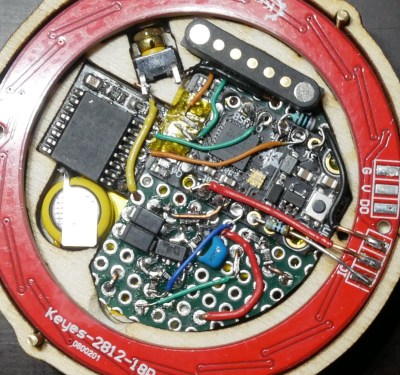When live-action role playing, or LARPing, one must keep fully in tune with the intended era. That means no digital watches, and certainly no pulling out your fantastic rectangle from the future to find out if you’re late picking up the kid.
 So what do you do when you’re LARPing at 2 PM, but you gotta be back at the soccer practice field by 5 PM? Well, you fashion a period-appropriate timepiece like [mclien]’s 17 o’ Clock. Visually, it’s about as close to a pocket sundial as you can get. It’s deliberately non-connected, and its only function is to tell the time.
So what do you do when you’re LARPing at 2 PM, but you gotta be back at the soccer practice field by 5 PM? Well, you fashion a period-appropriate timepiece like [mclien]’s 17 o’ Clock. Visually, it’s about as close to a pocket sundial as you can get. It’s deliberately non-connected, and its only function is to tell the time.
But how? If you visually divide the watch across the top and bottom, you get two sets of Roman numerals. The top half handles the hour, and the bottom half the minute. [mclien] started designing this in 2018 and picked it back up in the second half of 2024.
Back to the non-connected part. The only permanently-powered part of the project is a high-precision real-time clock (RTC). The rest uses a power latching circuit, which turns on the Adafruit Trinket M0 to show the time using a NeoPixel ring. Be sure to check out the awesome project logs with fantastic pictures throughout.
Looking for a smarter pocket watch? It’s time you built one yourself. And speaking of pocket sundials…













